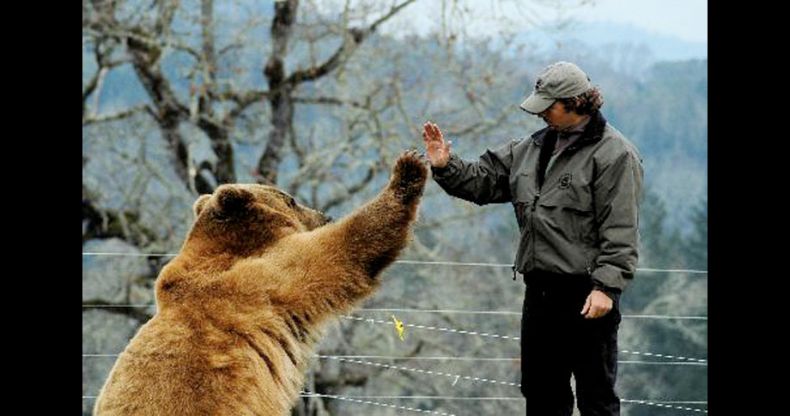|
|
Biologist Casey Anderson, And His Bear Butusov
|
The English word "bear" comes from Old English bera and belongs to a family of names for the bear in Germanic languages, in origin from an adjective meaning "brown". In Scandinavia the word for bear is björn (or bjørn), and is a relatively common given name for males. The use of this name is ancient and has been found mentioned in several runestone inscriptions. In Germanic culture, the bear was a symbol of the warrior, as evident from the Old English term beorn which can take the meaning of both "bear" and "warrior".
The reconstructed Proto-Indo-European name of the bear is h₂ŕ̥tḱos, whence Sanskrit r̥kṣa, Avestan arša, Greek ἄρκτος (arktos), Latin ursus, Welsh arth (whence perhaps "Arthur"), Albanian ari, Armenian arj. Also compared is Hittite ḫartagga-, the name of a monster or predator. In the binomial name of the brown bear, Ursus arctos, Linné simply combined the Latin and Greek names.
The Proto-Indo-European word for bear, h₂ŕ̥tḱos seems to have been subject to taboo deformation or replacement in some languages (as was the word for wolf, wlkwos), resulting in the use of numerous unrelated words with meanings like "brown one" (English bruin) and "honey-eater" (Slavic medved). Thus some Indo-European language groups do not share the same PIE root. The theory of the bear taboo is taught to almost all beginning students of Indo-European and historical linguistics; the putative original PIE word for bear is itself descriptive, because a cognate word in Sanskrit is rakṣas, meaning "harm, injury".
|
|









